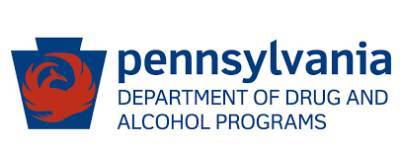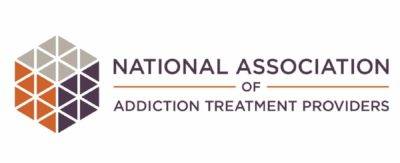More About Fentanyl: Addiction, Effects, and Treatment
![]() | 4.9 Google Reviews
| 4.9 Google Reviews
![]() | 4.9 Google Reviews
| 4.9 Google Reviews
Peace Valley Recovery is located in Bucks County, Pennsylvania. Our mission is to provide patient-centered care that focuses on healing and recovery from addiction. This blog provides information, news, and uplifting content to help people in their recovery journey.
Drug overdose rates keep rising each year and fentanyl use is to blame. Over the past few years, fentanyl has made its way into the ring of recreational use. Some use the drug on its own but more often it’s found mixed into batches of heroin, often without the user knowing.
67,367 people in America died from a drug-related overdose in 2018, nearly double the number in 2010. 31,335 of these deaths due to overdose were caused by a synthetic opioid other than methadone. Fentanyl was mainly to blame for the majority of those deaths.
What is fentanyl and how has it affected the population in the United States? How does it affect users and how can people struggling with addiction find help?
What is Fentanyl?
Fentanyl is a powerful synthetic drug in the prescription opioid class. It’s like morphine but between 50 to 100 times more powerful. This makes it the strongest prescription painkiller available. Clinicians use the drug to treat severe or chronic pain or after surgical procedures.
Doctors also use fentanyl for patients who develop physical tolerances to other opioids. As tolerance for medications like hydrocodone or morphine rises, clinicians prescribe fentanyl instead.
Fentanyl is also the newest drug to blame for the growing opioid epidemic taking over the U.S. It has effects like heroin and prescription painkillers. Fentanyl is more potent, though, so it’s more popular for recreational use and abuse.

Drug manufacturers mix fentanyl with heroin to increase its strength. They also sell fentanyl itself as heroin. Users thinking they’re taking pure heroin to take too much and accidentally overdose. These practices triggered the rise of drug overdose deaths over the past few years.
How Do People Use Fentanyl?
Fentanyl can be used in various ways depending on the intention of use. Clinicians and doctors provide it for patients in a monitored setting. Recreational use is much different than professional medical use.
Under the supervision of a doctor, fentanyl is available in a few different forms:
- An intramuscular shot
- A patch placed on the skin
- Cough drop-like lozenges
- It’s available on an outpatient basis when necessary. Patients who need at-home fentanyl usually receive it in patch form for ease of use.
There are different methods for recreational fentanyl use. Some can find legitimate medications or actual prescriptions. But most fentanyl on the market is made in other countries then imported into the United States. This illicit imported fentanyl is available in different forms such as:
- Pressed pills (like other prescription opioids)
- Powder
- Dropped onto blotter paper
- Eyedroppers
- Nasal sprays
Effects of Fentanyl Use
Like other opioid-based drugs, fentanyl binds to the body’s opioid receptors. Opioid receptors are responsible for functions including perception of pain and emotional regulation. This causes the pleasurable effects of heroin, prescription painkillers, morphine, and fentanyl alike.
Recreational fentanyl use gives a strong but pleasurable high. It leaves users feeling relaxed, euphoric, and calm. “Nodding out” is one common effect that users enjoy. It refers to the blissful shift between states of alertness and semi-consciousness.
The first opioid high people experience is intense and elusive. Users find they cannot often replicate their first opioid experience. Still, they’ll go on a neverending chase trying to reach it again.
Other less-pleasurable side effects of fentanyl use include:
- Drowsiness
- Slowed breathing
- Confusion
- Constipation
- Nausea
All opioids cause breathing and heart rate to slow. This can lead to difficulties in breathing and possible respiratory arrest. Taking too much fentanyl intensifies most of these effects. If someone takes too much in a short time it can lead to serious complications.
The Dangers of Fentanyl
Fentanyl is one of the most dangerous drugs available today. Opioids are notorious for their effects on drug users throughout the United States. Fentanyl has only served to amplify this problem.
It doesn’t take much to feel the effects of fentanyl. Like other opioids, it’s also a highly addictive substance even in medical scenarios. Legitimate medical use doesn’t negate the high dependence potential of fentanyl.
It’s far easier to overdose on fentanyl than it is on other opioids because of its incredible potency. More than 31,000 people died from an overdose involving fentanyl in 2018. It’s now the leading cause of deaths due to drug overdose. The drug caused 59 percent of opioid-related deaths in 2017.

Heroin use is dangerous to begin with. Fentanyl-laced heroin makes the drug even worse. Substances laced with fentanyl are often to blame for these accidental overdoses. Addicts are familiar with the amount they need to get high. They may not consider whether their drugs have other substances cut in with them.
Cutting fentanyl into other drugs like heroin or cocaine causes many accidental overdoses. Their drugs are much more potent when they are cut with fentanyl.
The lack of quality control on illicit drug production adds another layer of danger. There are no strict control measures that legitimate prescription drugs have. Users have no guarantee of consistency between batches. This can lead to accidental overdose or death.
Treating Fentanyl Addiction
Fentanyl addiction is a growing problem in the United States. An estimated 2 million people ages 12 and older have an opioid use disorder according to the 2018 National Survey on Drug Use and Health. The alarming dangers associated with opioid use and abuse call for a solution to the problem.
Thankfully, there are options for treating fentanyl addiction and other opioid use disorders. Drug addiction does not have to be a one-way downhill road; there are ways to escape the cycle of addiction.
Drug and alcohol treatment facilities the first step toward treating substance use disorders. These programs are well-equipped to handle the complicated condition of fentanyl addiction. Treatment places people on the path of recovery.
Most start with a medically-supervised taper to ensure a safe detox process. Then people transition to another level of care depending on their program. Effective treatment equips patients with the tools they need to thrive.
Do you want to learn more about treatment programs for fentanyl addiction in Pennsylvania? Peace Valley Recovery offers a fully-fledged outpatient program for individuals looking to integrate back into life after addiction. Reach out to us at (267) 662-2462 to speak with an addiction specialist who can answer any questions you might have!
Sources:
- National Institute on Drug Abuse: https://www.drugabuse.gov/drug-topics/trends-statistics/overdose-death-rates
- News Medical: https://www.news-medical.net/health/Fentanyl-History.aspx
- The Journal of Pain: https://www.jpain.org/article/S1526-5900(14)00905-5/pdf
- Centers for Disease Control and Prevention: https://www.cdc.gov/opioids/basics/fentanyl.html
- Mayo Clinic: https://www.mayoclinic.org/drugs-supplements/fentanyl-injection-route/description/drg-20075614
- U.S. China Economic and Security Review Commission: https://www.uscc.gov/research/fentanyl-chinas-deadly-export-united-states
- National Institute on Drug Abuse: https://www.drugabuse.gov/publications/drugfacts/fentanyl
- Substance Abuse and Mental Health Services Administration: https://www.samhsa.gov/data/sites/default/files/cbhsq-reports/NSDUHNationalFindingsReport2018/NSDUHNationalFindingsReport2018.pdf
You May Also Like to Read
Telehealth in Addiction Treatment
Telehealth in Addiction Treatment: Expanding Access and Improving Outcomes Authored by Chris Schumacher, | Medically Reviewed by [...]
More About Fentanyl: Addiction, Effects, and Treatment
More About Fentanyl: Addiction, Effects, and Treatment Drug overdose rates keep rising each year and fentanyl [...]
What Is Holistic Treatment for Drug Addiction?
What Is Holistic Treatment for Drug Addiction? At Peace Valley Recovery, we understand that as a [...]








